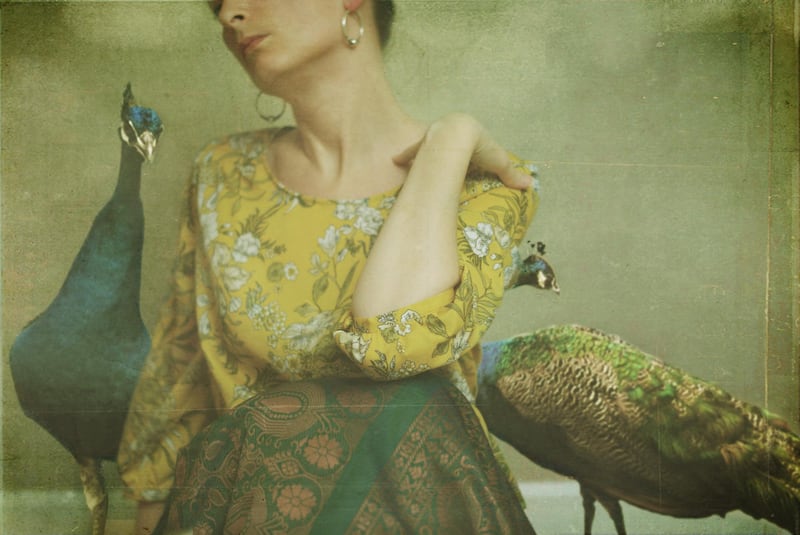It was in the midst of Lebanon's 15-year civil war that Najlaa Khoury began gathering the stories that became Pearls on a Branch: Oral Tales.
In her moving introduction, Khoury writes about how she went to people’s homes in the late 1980s, asking mostly older women to tell the oral tales they remembered from their childhoods.
Khoury and others turned the stories into theatre for a project called Sandouk El Fergeh (Box of Wonders), staging them in spaces throughout Lebanon during the war.
In 2014, decades later, Khoury published the stories in Arabic. Now, 30 of them have been brought out in Inea Bushnaq's dazzlingly artful translation.
Many of them feature the stock characters, repetition, and tropes of other folktales from around the world, including Bushnaq's 1986 collection Arab Folktales. But Khoury was not searching for tales aimed at children.
She writes about how she returned to one household to hear the woman re-tell her tale without children around, so that the more adult content was "not only clearly pronounced but discussed and commented on".
This is still an all-ages collection, yet in a way that is surprisingly sympathetic to the realities of women’s lives. In at least four of the stories, women find themselves pregnant out of wedlock. In one, a young girl is tricked into eating a peacock egg by her jealous sisters – and, as everyone knows, that makes you pregnant (apparently). In another, a girl skims cream off the top of the family milk. This, too, causes pregnancy.
In neither case is the girl punished. The girl tricked into eating a peacock egg is the hero of Lady Tanaqeesh and the Eggs of the Tawawees, and she runs away and gives birth on her own, where she attracts a flock of magical birds.
These birds go off singing about the evil deeds of her sisters. Here as elsewhere, Bushnaq's translation is finely tuned, working to match the rhythm and rhyme of the Arabic. This is not always possible, because Arabic endings make rhyme much easier, but Bushnaq does what is possible and more:
“We won’t be shooed, we won’t be chased
“We are the doves of Lady Tanaqeesh
“The one you shamed and you disgraced
“Feeding her the eggs of the tawawees.”
Eventually, Lady Tanaqeesh's father hears the birds, and off he goes to fetch his daughter. He welcomes back his beloved youngest, who seems prepared to leave her infant to be raised by the birds. She sets off with her father, but hurries back first for a thimble, then for thread, then for a needle.
After that, Lady Tanaqeesh's father follows her and spies the baby. Instead of being angry, he tells her: "Go, dear daughter! Go and bring the child you love and can't be parted from!" This moment is particularly moving, because it is a fairy tale, yet the moment hews close to a real father's loving forgiveness.
In the end, the sisters are exiled. Lady Tanaqeesh marries a kind hunter and lives “peacefully without cares and had many children, both boys and girls”.
In her introduction, Bushnaq tells us that a number of tales open with the formula "kan ya man kan, fi qadim az-zaman". But instead of starting the tales with "Once upon a time, a long time ago", as many translators do, Bushnaq's stories retain a signature for each teller. The wonderful The Sun Her Mother, The Moon Her
Father opens:
“Let us tell stories that amuse and delight. Even if we sleep a little later tonight.
Some on pillows stitched with pearls and coral rings;
Some on pillows full of life and crawling things.”
This story centres on the child of single mother, for whom things end well. It ends with the charming refrain: “And they lived happily year after year. God sweeten the days of the listeners here.”
The timeless nature of the tales, joined with Bushnaq’s tremendously gifted translation, puts the reader into a magical realm, where it seems almost possible to hear the Arabic storyteller hidden inside the English words.
Pearls on a Branch, like most folktale collections, is full of wicked women. There are jealous cousins, first wives, and sisters who feel they have been bested by a rival. But there is also another sort of wife, such as the better half in The Frog and His Wife. In this story, a pair of middle-aged frogs live happily, alternately quarrelling and making peace. Then the wife splashes the husband, and he insults her: "What a silly thing to do/For someone old as you!/An outrage/At your age!"
At this, the frog-wife storms off to her parents' house. The frog-husband is distraught and alone, and sends a series of emissaries to make peace. She finally rides back on a horse, and after a long and teasing encounter, decides she loves her froggy husband after all.
“And from then on the frog and his wife sunned themselves and lived happily with each other again…. Until this day/They jump and play/They eat and drink and sleep and snore/Content, they ask for nothing more.”
Pearls on a Branch is an all-ages collection with something for everyone: delicious language, fun stories and unexpected reversals. Those who read it will find themselves like the married frogs at the end of their tale: "Content, they ask for nothing more."
________________
Read more:
[ New English language history is everything you need to know about the Emirates between two covers ]
[ Staunch Book Prize: a reward for the best thriller that doesn't use women as victims ]
[ ‘Frankenstein In Baghdad' to be released in English: we speak to Ahmed Saadawi ]
________________





